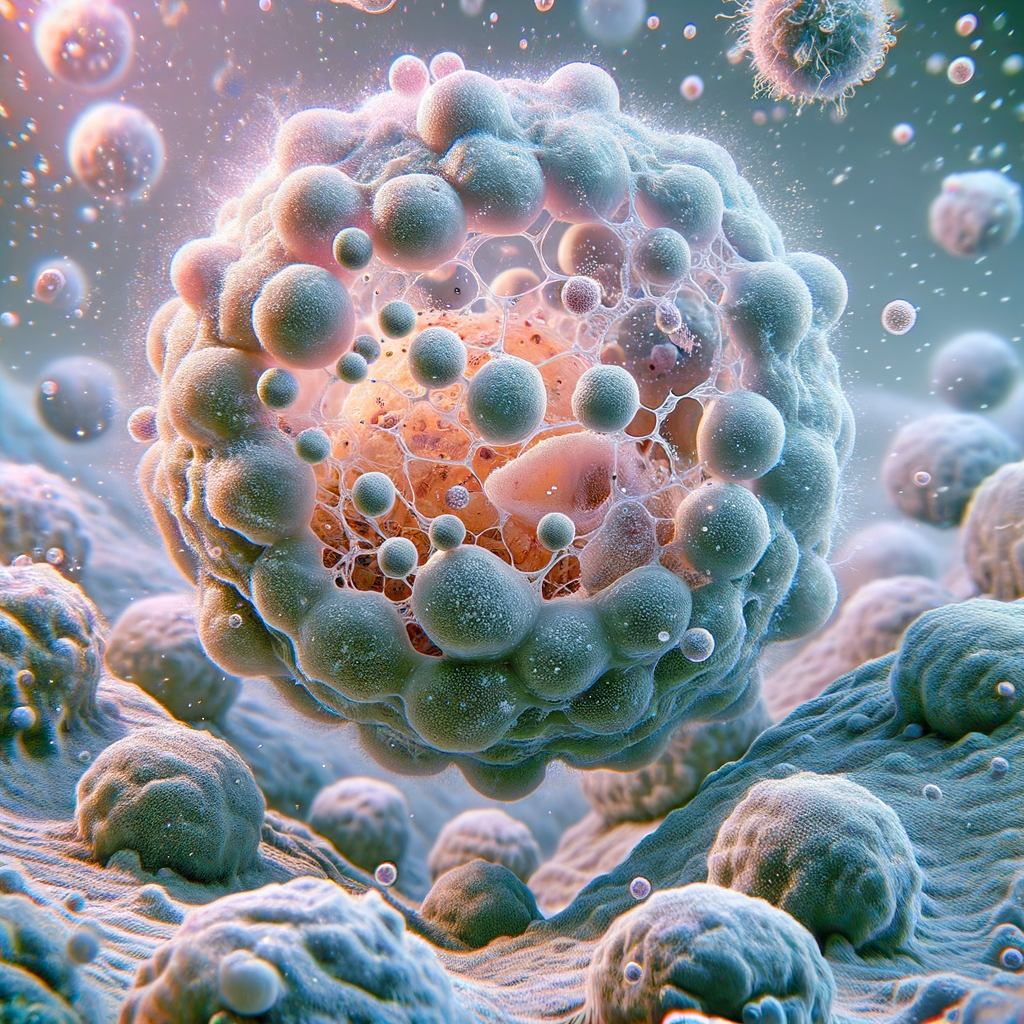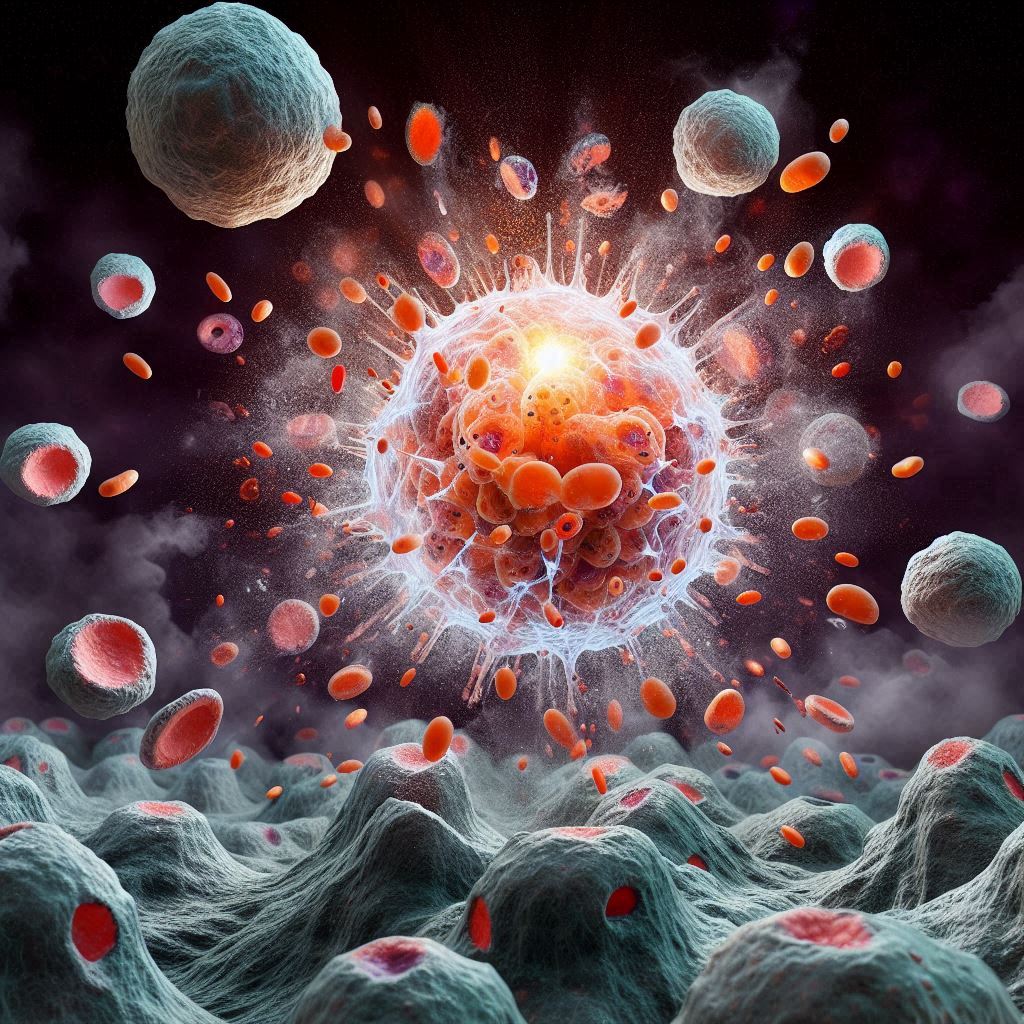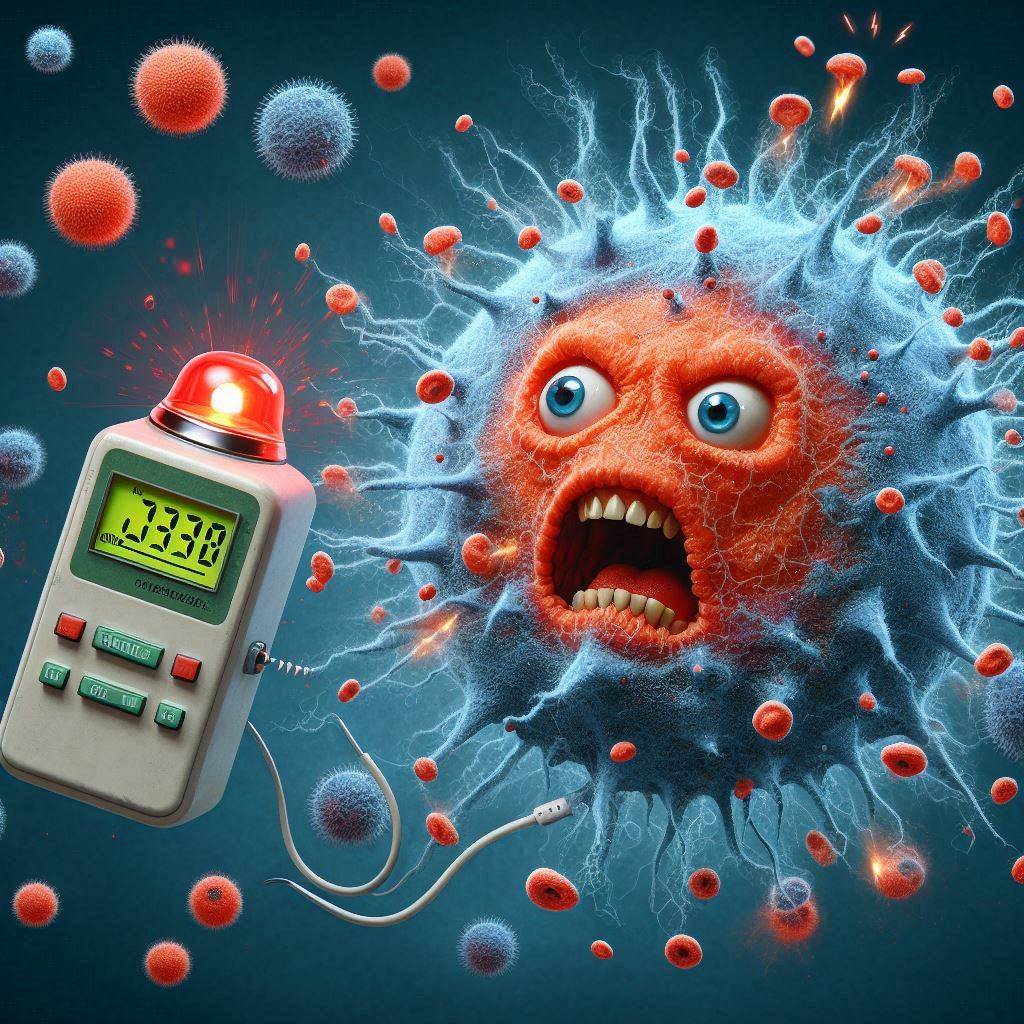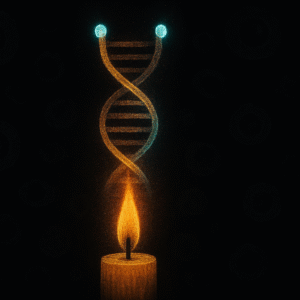Have you ever wondered how cells die? It’s not as morbid as it sounds – in fact, it’s a captivating process that’s crucial for your health! Imagine your body as a bustling city, with cells as its citizens. Just like a city needs to manage its population, your body needs to control its cellular residents. In this fun, easy guide, I am going to explore the world of cellular goodbyes and discover why it matters so much. So, let’s dive into the tiny world inside you!
Table of Contents
Why Should We Care About How Cells Die?
Before we jump into the nitty-gritty of cell death, let’s talk about why it’s so important. Every day, billions of cells in your body die and are replaced by new ones. It’s like your body is constantly renovating itself! This process helps you:
- Grow and develop properly
- Maintain healthy tissues and organs
- Fight off infections and diseases
- Heal wounds
- Prevent cancer
Our bodies have a system for controlling cell death. When this system breaks down, it can cause serious problems like cancer, autoimmune diseases such as rheumatoid arthritis, or even death from an infection like COVID-19.
So, understanding how cells die isn’t just cool science – it’s key to understanding how our bodies stay healthy!
The Cellular Circle of Life
Think of your body as a never-ending theatrical performance. Cells are the actors, constantly entering and exiting the stage. Some cells, like those in your skin, have a short performance – they’re on stage for just a few weeks before taking their final bow. Others, like certain brain cells, are in it for the long haul, potentially lasting a lifetime.
But here’s the kicker: for every cell that exits stage left, a new one enters stage right. This constant turnover is what keeps your body’s performance running smoothly. Without it, you’d be stuck with a bunch of old, tired actors who can’t remember their lines!
The Three Main Ways Cells Say Goodbye
Now that we know why cell death matters, let’s explore how cells die. There are three main types of cell death that scientists have discovered. Each one has a fancy scientific name, but don’t worry – I’ll break them down into easy-to-understand concepts.
1. Apoptosis: The Tidy Takeover
Apoptosis is the most common way cells die. It’s like a Marie Kondo-style cleanup of your body’s cells. Here’s how it works:
- The cell gets a signal that it’s time to go. This could be because it’s old, damaged, or just not needed anymore.
- The cell starts to shrink and break apart into small, neat packages.
- Other cells come along and “eat” these packages, recycling the materials.
Apoptosis is so tidy that you never even notice it happening! It’s happening right now in your body, keeping everything in balance.

The Apoptosis Process: A Closer Look
Let’s dive deeper into how apoptosis works.
Imagine your cells are like batteries that power a flashlight. Here’s how apoptosis can be compared to the process of replacing and disposing of old batteries:
- Battery Low Signal: Just like when the torch starts dimming, signaling low battery with a flicker, cells receive signals (like internal damage or external cues) indicating it’s time to retire.
- Replacing Batteries: When the torch’s batteries weaken, we replace them with fresh ones. Similarly, cells initiate a shutdown process where they cease normal functions and prepare for removal.
- Preparing for Disposal: Old batteries are carefully removed from the torch and stored properly until disposal. Similarly, cells package their contents neatly, preparing for removal.
- Disposal: The old batteries are disposed of responsibly to prevent environmental harm. Likewise, apoptotic cells break into small, contained pieces (apoptotic bodies) that are swiftly cleaned up by surrounding cells, ensuring no harmful debris remains.
- Recycling: Just as batteries can be recycled for their components, the contents of apoptotic bodies are recycled by neighboring cells, ensuring that valuable materials are reused.
Apoptosis is a controlled process that ensures the orderly removal and recycling of cells that are no longer functioning optimally, much like responsibly managing old batteries from a flashlight.
Why is Apoptosis Important?
Apoptosis plays a crucial role in many bodily processes:
- Development: It helps shape your body during development. For example, it’s responsible for creating the spaces between your fingers and toes when you were an embryo! Without apoptosis, we’d all have webbed hands and feet.
- Immune System Regulation: Apoptosis helps your immune system function properly by removing old or unnecessary immune cells. It’s like retiring veteran soldiers to make room for new recruits.
- Cancer Prevention: It removes potentially dangerous cells, like those that might become cancerous. Think of it as your body’s quality control system, removing faulty products before they can cause problems.
- Hormone-Dependent Tissue Regulation: Apoptosis helps regulate tissues that change with hormone levels. For instance, it’s responsible for the monthly shedding of the uterine lining in menstruation.
2. Necroptosis: The Messy Meltdown
If apoptosis is a tidy takeover, necroptosis is more like a chaotic meltdown. Here’s what happens:
- The cell gets badly injured or infected.
- Instead of quietly packaging itself up, the cell swells up like a balloon.
- Eventually, the cell bursts, spilling its contents everywhere.
- This mess alerts the immune system, which rushes in to clean up.
Necroptosis is messy, but sometimes it’s necessary – especially when your body is fighting off invaders like viruses or bacteria.
The Necroptosis Process: A Dramatic Analogy
Let’s imagine necroptosis as a dramatic scene in an action movie:
- The Threat Arrives: The cell (our movie’s hero) faces a serious threat, like a viral infection or severe injury. It’s like the hero being cornered by the bad guys.
- The Backup Plan Activates: When normal defense mechanisms (like apoptosis) are blocked, necroptosis kicks in. It’s the hero’s secret “nuclear option.”
- The Swelling Begins: The cell starts to swell. Picture our hero dramatically declaring, “If I’m going down, I’m taking you all with me!” as he prepares to detonate an explosive.
- The Grand Explosion: The cell bursts open, releasing its contents. It’s like the hero setting off the explosion, taking out the bad guys but also causing significant collateral damage.
- Calling for Backup: The cellular debris acts as a distress signal, attracting immune cells to the scene. It’s like the explosion alerting the authorities, who rush in to deal with the aftermath.

Why is Necroptosis Important?
Necroptosis serves some vital functions:
- Last Resort Defense: It’s an emergency plan when there is no time to carry out a well planned process like apoptosis. It’s the body’s way of saying, “If we can’t do this quietly, we’ll do it loudly!”
- Immune System Alarm: The intriguing aspect of necroptosis lies in its dual nature: it acts as a dramatic signal flare to alert the immune system when something goes awry, akin to a building’s alarms blaring in unison. Yet, this can also be a double-edged sword. An overly vigorous immune response may cascade into a cycle of heightened necroptosis, potentially spiraling into dangerous outcomes such as autoimmune diseases or even cancer. This risk intensifies in situations where the immune system is sensitized by factors like aging and persistent inflammation, adding layers to its enigmatic role in health and disease.
3. Pyroptosis: The Fiery Farewell
Pyroptosis is the newest discovery in the world of cell death. It’s like a controlled burn in a forest. Here’s how it goes:
- The cell detects dangerous invaders, like bacteria or viruses.
- It sets off internal “alarms” called inflammasomes.
- These alarms cause the cell to form holes in its outer layer and release warning signals.
- The cell then swells and bursts, releasing its contents and alerting nearby immune cells.
Pyroptosis is a bit like a cellular self-destruct sequence that also calls for backup!
The Pyroptosis Process: A Fiery Analogy
Let’s imagine pyroptosis as a dramatic scene in a spy movie:
- Intruder Alert: The cell (our secret agent) detects dangerous invaders (enemy spies). It’s like our agent discovering that the enemy has infiltrated the base.
- Activating the Alarm: The cell activates inflammasomes (the base’s advanced security system). Picture flashing red lights and blaring sirens.
- Sending Distress Signals: The cell releases inflammatory molecules. It’s like our agent sending out encrypted distress signals to allied forces.
- Preparing for Self-Destruct: The cell forms pores in its membrane and starts to swell. Imagine our agent initiating the base’s self-destruct sequence.
- The Fiery Finale: The cell bursts, releasing its contents and more inflammatory signals. It’s like the base exploding in a spectacular fireball, taking out the enemy spies and alerting nearby allies to the danger.

Why is Pyroptosis Important?
Pyroptosis plays a crucial role in our immune system:
- Rapid Pathogen Elimination: It quickly eliminates cells that have been invaded by pathogens. It’s like isolating and neutralizing a threat before it can spread.
- Immune System Activation: The inflammatory signals it releases help recruit more immune cells to fight the infection. Think of it as sending up a flare to call in reinforcements.
- Creating a Hostile Environment: It can help create an inhospitable environment for pathogens, making it harder for them to spread. It’s like scorching the earth to prevent enemy advancement.
When Cell Death Goes Wrong
While cell death is normally a good thing, sometimes it can go haywire. Understanding how cells die helps us understand what happens when things go wrong. Here are some examples:
- Cancer: Cancer cells often have tricks to avoid apoptosis. They’re like party guests who don’t know when to leave! Understanding how cells die helps scientists develop treatments that can convince cancer cells to self-destruct.
- Neurodegenerative Diseases: In conditions like Alzheimer’s or Parkinson’s disease, too many brain cells die. It’s like a city where buildings are being demolished faster than they can be rebuilt. Scientists are studying how cells die to find ways to keep these brain cells alive longer.
- Autoimmune Diseases: Sometimes, the body mistakenly triggers cell death in healthy cells. This is like your body’s security system going rogue and attacking the wrong targets. Imagine if a country’s army started shooting innocent citizens instead of criminals!
- Heart Disease: When heart cells die from lack of oxygen (like during a heart attack), it can cause serious damage. It’s like a power outage in a crucial part of the city. Understanding how cells die in these conditions could lead to new treatments to “keep the lights on” in heart cells.
- Complications and Death in viral infections like COVID-19: Viral infections can sometimes cause cells to die uncontrollably, which can then harm nearby healthy cells. This is particularly common in people with weakened immune systems due to conditions like diabetes, high blood pressure, or simply old age. In severe cases, this can lead to a dangerous overreaction by the immune system known as a cytokine storm. This overreaction was a major cause of death for many during the COVID-19 pandemic. Please click HERE to read more on this topic.
By studying how cells die, scientists are working on new treatments for these and many other diseases!
The Future of Cell Death Research
The world of cell death research is always evolving. Here are some exciting areas scientists are exploring:
- Targeted Cancer Therapies: Researchers are developing drugs that can trigger cell death specifically in cancer cells while leaving healthy cells alone. It’s like creating a pest control system that only affects the pests, not the pets!
- Nanoparticle Delivery: Scientists are working on tiny particles that can deliver cell death-inducing compounds directly to specific cells. Imagine tiny submarines navigating your bloodstream, delivering their payload only to the “bad guy” cells!
- Artificial Intelligence: AI is being used to predict how different compounds might affect cell death, potentially speeding up drug discovery.
- Personalized Medicine: As we learn more about individual variations in cell death pathways, we might be able to tailor treatments to each person’s unique cellular landscape.
- Regenerative Medicine: Understanding cell death could help us control tissue regeneration, potentially leading to new ways to heal injuries or even regrow organs! Imagine if we could regrow a damaged heart as easily as a starfish regrows a lost arm.
Conclusion: The Circle of (Cellular) Life
As we’ve discovered, the question “How do cells die?” has a fascinating and complex answer. From the tidy cleanup of apoptosis to the alarm-raising pyroptosis, your cells have many ways of saying goodbye. This cellular circle of life is happening inside you right now, keeping you healthy and functioning.
The next time you get a paper cut, fight off a cold, or simply look in the mirror, remember the billions of cellular heroes sacrificing themselves to keep you going. It’s a microscopic drama happening within you every day, and now you’re in on the secret!
Understanding how cells die opens up new possibilities for treating diseases, extending healthy lifespans, and understanding the fundamental processes of life itself. The story of cell death is really a story about life – how our bodies maintain balance, defend against threats, and continually renew themselves.
So stay curious, keep exploring, and remember – in the world of cells, every ending is just making room for a new beginning. The microscopic world inside you is more amazing than you ever imagined!
FAQs About How Cells Die
1. How many cells die in our body every day?
On average, about 50-70 billion cells die in your body every day! Don’t worry, though – they’re replaced by new cells to keep everything in balance. Your body is constantly renovating itself!
2. Can cell death be prevented?
While we can’t (and shouldn’t) prevent all cell death, scientists are working on ways to prevent excessive or unwanted cell death in certain conditions, like neurodegenerative diseases. It’s like learning to control the demolition in our cellular city.
3. Do all organisms experience cell death?
Yes! Cell death is a fundamental process in all multicellular organisms, from plants to animals. Even some single-celled organisms have processes similar to apoptosis. It’s a universal language of life!
4. Is cell death always good for the body?
While cell death is generally necessary for health, too much or too little can cause problems. The key is balance! It’s like maintaining the perfect population in our cellular city – not too crowded, not too empty.
5. How fast do cells die?
The process of cell death can be quite fast. Apoptosis, for example, can be completed in as little as 2-3 hours from start to finish!
Remember, every question you ask about how cells die brings us one step closer to understanding the amazing world inside us. Keep curious, and keep asking questions!






One thought on “How Do Cells Die? A Fascinating Journey into the World of Cellular Farewells”